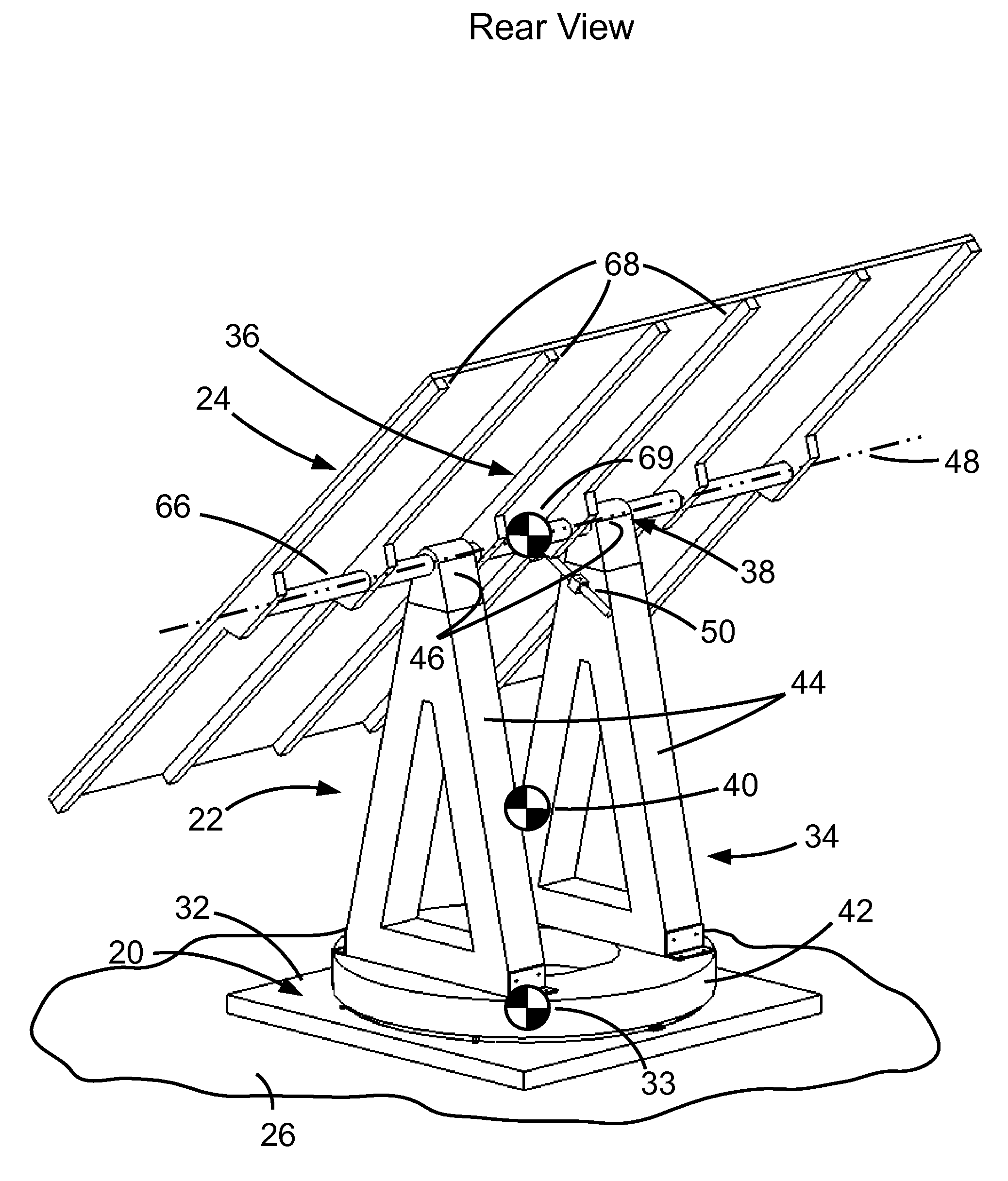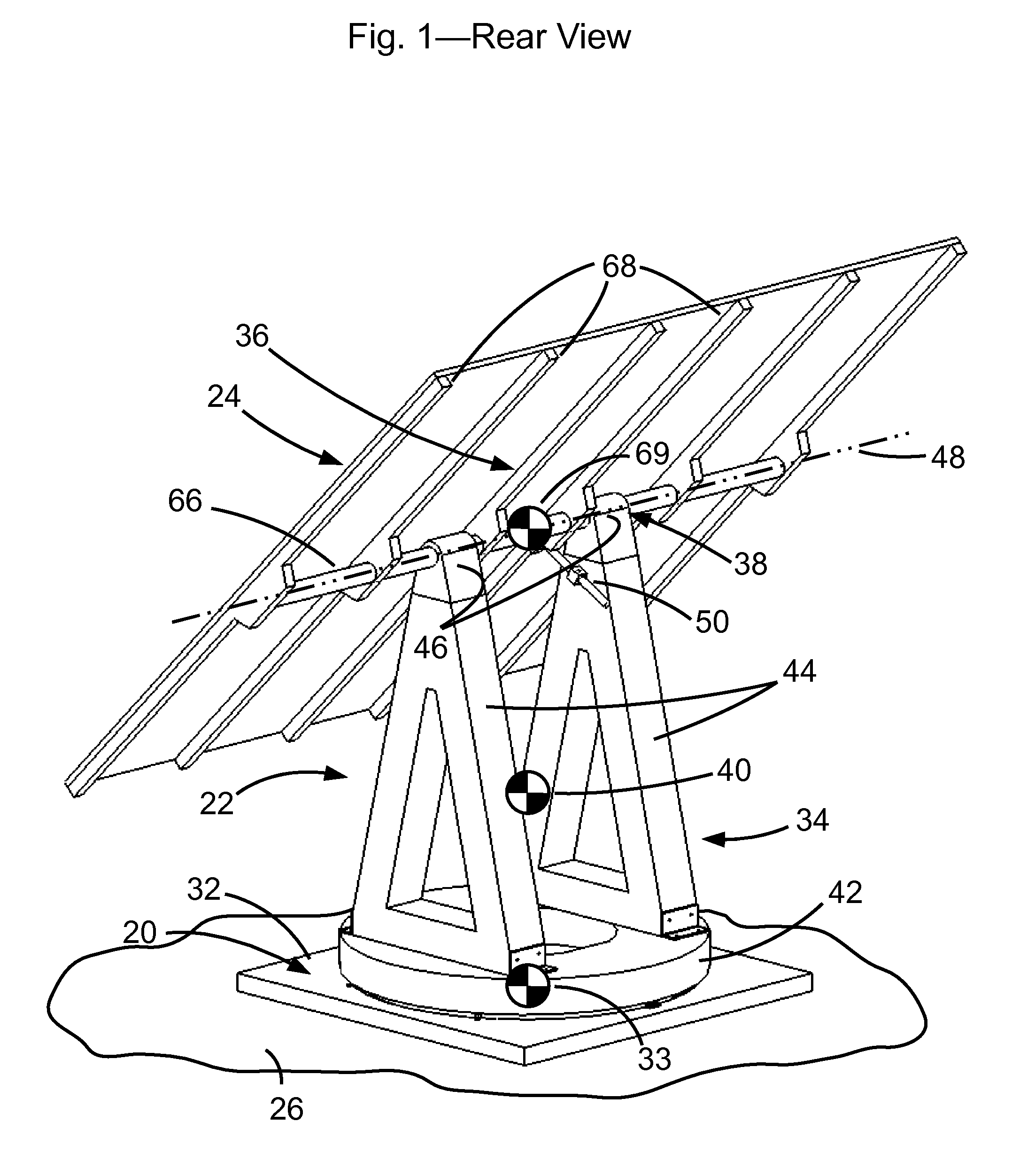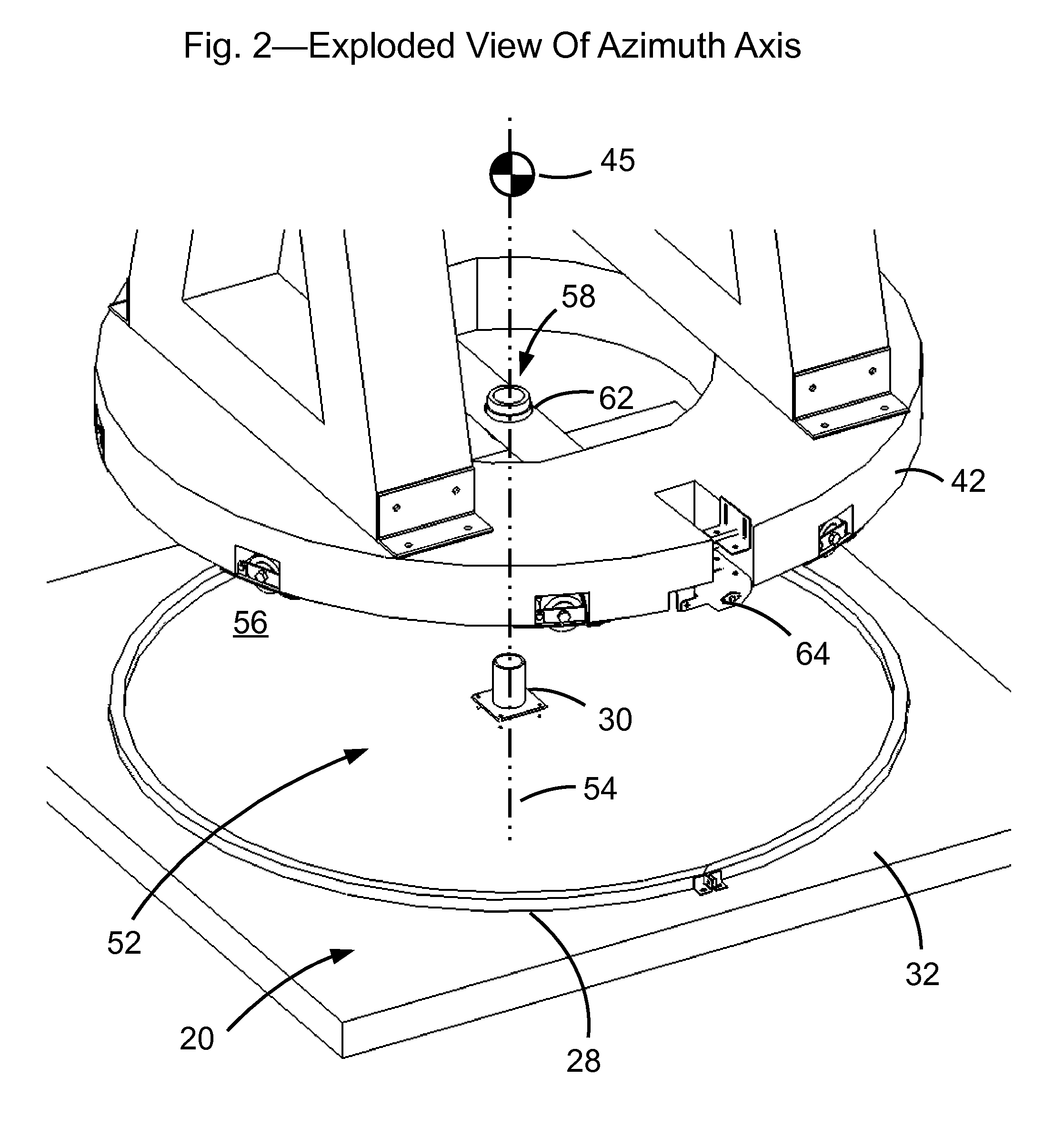Self ballasted celestial tracking apparatus
a tracking apparatus and celestial technology, applied in the field of celestial tracking apparatuses, can solve the problems of limited range of motion, tracking apparatus might not be able to address all arbitrary points in the sky, and limited range of desired orientations, so as to reduce the total cost of installation and resist overturning forces
- Summary
- Abstract
- Description
- Claims
- Application Information
AI Technical Summary
Benefits of technology
Problems solved by technology
Method used
Image
Examples
first embodiment
[0041]In a first embodiment, the invention is embodied as an azimuth-elevation style tracking apparatus comprising a support 20, a tracking assembly 22, and a payload assembly 24. Support 20 is mounted on a surface 26 at a contact surface 27. In this embodiment, surface 26 is realized as the Earth. In other embodiments, surface 26 could be a separate structure, such as a the roof of a dwelling.
[0042]In the first embodiment, support 20 comprises a support track 28 and a center bearing support 30 mounted on a concrete slab 32. Concrete slab 32 is mounted on surface 26 and has a center of mass 33.
[0043]In other embodiments, concrete slab 32 may not be necessary, as support track 28 could be mounted directly to surface 26.
[0044]In the first embodiment, tracking assembly 22 comprises an azimuth structure 34, an elevation structure 36, and an elevation bearing set 38 by which elevation structure 36 is coupled to azimuth structure 34. Tracking assembly 22 has a center of mass 40. Azimuth s...
second embodiment
[0061]In a second embodiment, the invention is embodied as a tilt-roll style tracking apparatus comprising a support 20′ and a tracking assembly 22′ that are modified from those described in the first embodiment, and payload assembly 24′ that is similar to that described in the first embodiment. Note that the prime notation (for example 20′) indicates an element that is similar in form and function and name to an element in the first embodiment having the unprimed notation (in this case, 20). Support 20′ is mounted on surface 26′, which in this embodiment is realized as the Earth. In other embodiments, surface 26′ could be a separate structure, such as a the roof of a dwelling or a concrete surface.
[0062]In the second embodiment, support 20′ comprises two of a leg assembly 150 mounted on surface 26′ at a set of contact surfaces 152. A bearing housing 154 is affixed at the top of each leg assembly 150. Both of bearing housing 154 in combination define the outer races of a tilt bearin...
PUM
 Login to View More
Login to View More Abstract
Description
Claims
Application Information
 Login to View More
Login to View More - R&D
- Intellectual Property
- Life Sciences
- Materials
- Tech Scout
- Unparalleled Data Quality
- Higher Quality Content
- 60% Fewer Hallucinations
Browse by: Latest US Patents, China's latest patents, Technical Efficacy Thesaurus, Application Domain, Technology Topic, Popular Technical Reports.
© 2025 PatSnap. All rights reserved.Legal|Privacy policy|Modern Slavery Act Transparency Statement|Sitemap|About US| Contact US: help@patsnap.com



